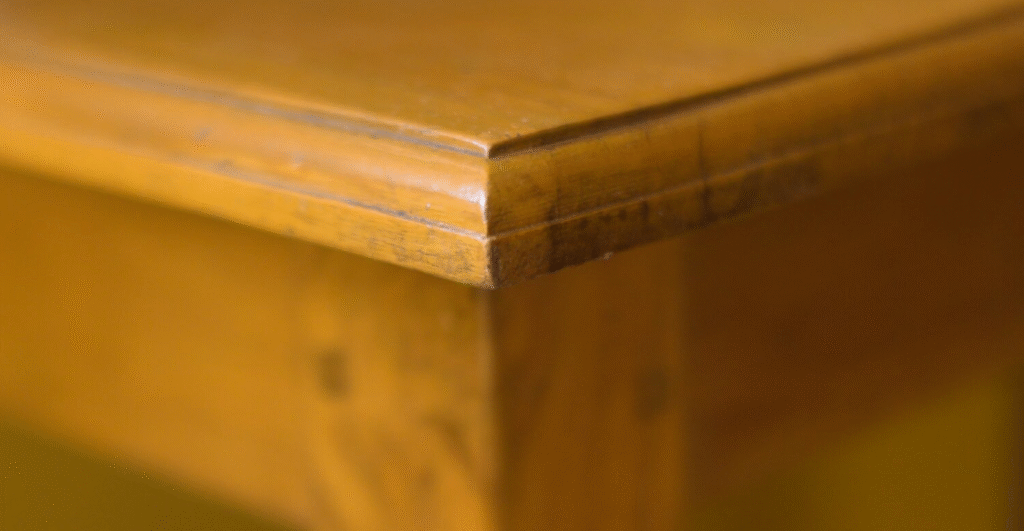Furniture often adds charm to any space, especially when it features finishes that bring out its original beauty. Yet, with time, even the sturdiest pieces can show signs of wear. Scratches, stains, and fading are common issues that can make furniture look old and worn out. These damages not only affect the appearance but can also decrease the furniture’s value and appeal. Understanding how to address these problems is key to maintaining the allure of your furniture, keeping it a centerpiece rather than a distraction.
Residents in a lot of New England cities treasure their furniture not only for its functionality but also as a reflection of style. Fixing damaged furniture finishes can restore the elegance and ensure that each piece complements the home. Taking the time to repair these flaws offers renewed beauty and a great way to preserve sentimental pieces. Professional help becomes invaluable here, not just for quick fixes but for ensuring the longevity and enduring appeal of your beloved furniture.
Identifying Different Types of Damage
Furniture can experience a variety of damages over time. Recognizing these can make it easier to apply the right solutions.
– Surface Scratches and Minor Dents: Often caused by everyday use or accidents, these are the most common types of damage. They may look insignificant but can accumulate over time, giving the furniture a rough appearance.
– Deep Gouges and Major Scratches: These are more serious and usually result from moving furniture or sharp objects. They may expose the raw wood underneath, making them more noticeable.
– Water Stains and White Marks: Water marks often occur when moisture sits on a finish for too long, usually from spills or condensation from cold glasses left on the surface without protection.
– Sun Damage and Fading: Prolonged exposure to sunlight can cause the furniture finish to fade, leading to uneven coloration. This is common for pieces placed near windows or under direct sunlight.
– Finish Peeling or Chipping: Over time, finishes can start to peel or chip away, especially on edges and corners. This exposes the wood to elements, potentially causing further damage if not addressed.
Recognizing these issues is the first step in bringing new life to your furniture. With the right care, each piece can regain its charm and continue to enhance your living space for years to come.
Step-By-Step Solutions for Surface Scratches and Minor Dents
Surface scratches and small dents can often be the bane of beautiful furniture, but they don’t have to be a permanent mark on its charm. There is a simple sequence of actions that can make a world of difference.
– Cleaning the Surface Properly: Begin by wiping down the damaged area with a cloth to remove dust and dirt. It’s essential to have a clean surface before tackling any marks. Dust particles can get trapped and make the repair less effective.
– Using Touch-Up Markers or Crayons: Once it’s clean, use a touch-up marker or crayon that matches the color of your furniture. These tools are designed to camouflage scratches by adding a fresh layer of color. Test the color on an inconspicuous area first to ensure it matches.
– Buffing and Polishing Techniques: After using touch-up products, buff the surface with a soft cloth. This helps blend the repair with the surrounding area, giving it a seamless appearance. You can also use furniture polish to add a protective shine.
– Professional Refinishing Services: If home fixes don’t cut it, expert help offers precision in bringing scratches back to their former glory. Professionals ensure an even and polished finish across the furniture piece, making it look almost new again.
Addressing Deep Gouges and Major Scratches
More severe damage like deep gouges requires specific steps to restore the piece effectively. Here’s how you can tackle these more significant blemishes:
1. Preparing the Surface for Repair: Start by cleaning the area around the gouge with a damp cloth. Make sure there’s no debris or dust that could interfere with the repair.
2. Filling Scratches with Wood Filler: Choose a wood filler that matches your furniture’s wood type and color. Apply the filler into the gouge, smoothing it out with a putty knife. Follow the drying instructions on the filler, which usually takes a few hours to cure properly.
3. Sanding and Smoothing the Area: Once the filler is completely dry, gently sand the area with fine-grit sandpaper until the surface is smooth and level with the rest of the furniture.
4. Staining and Sealing for a Cohesive Appearance: After sanding, apply wood stain over the repaired area to match the rest of the piece. When the stain is dry, seal the repair with a coat of varnish or polyurethane to protect the surface and ensure durability.
Fixing Water Stains, White Marks, and Peeling Finish
Dealing with water stains, those pesky white circles from wet glasses, and peeling finishes can be frustrating. Here’s what you can do to mend these issues:
– Techniques to Remove Water Stains: You might try applying a mixture of baking soda and water to the stained area using a soft cloth. Gently rub it in, and the stain should begin to lift. Sometimes, a gentle application of mayonnaise or petroleum jelly left overnight can also help.
– Blending White Marks into the Finish: To address those unwanted white marks, you can gently apply lemon oil or furniture polish using steel wool. Be careful to rub lightly to avoid further damage to the surface.
– Addressing Peeling or Chipped Finish: For a peeling finish, lightly sand the affected area until smooth. Apply a matching furniture stain and follow up with a layer of sealant to protect the surface.
– Importance of Hiring a Furniture Restorer for Severe Damage: When the going gets tough, and these solutions don’t suffice, seeking professional restoration services is a dependable choice. Experts offer the know-how to fix extensive damage, preserving that cherished piece for the future.
Bringing It All Together
Maintaining the look of your furniture is like caring for a cherished heirloom—it’s about the details and giving each piece the attention it deserves. Each of these steps can help your furniture stand out once again, radiating warmth and style in any room. When you think about the times you’ve gathered around a favorite table, or how certain wood grains catch the sunlight, it’s clear that furniture isn’t just practical it’s part of your life story.
So, if you find yourself struggling to manage a tougher repair, don’t hesitate to reach out to professionals. They can rejuvenate those special pieces, ensuring they continue to grace your home with charm for many more years. After all, well-kept furniture doesn’t just add beauty; it tells a story of care and love for your living space.
To keep your furniture looking its best and avoid the hassle of DIY fixes, consider using a furniture restorer. They can offer the specialized care your pieces deserve and rejuvenate them to fit seamlessly in your home. If you need expert help, reach out to The Crafty Renewal to explore how we can assist in maintaining your furniture’s beauty and functionality.



